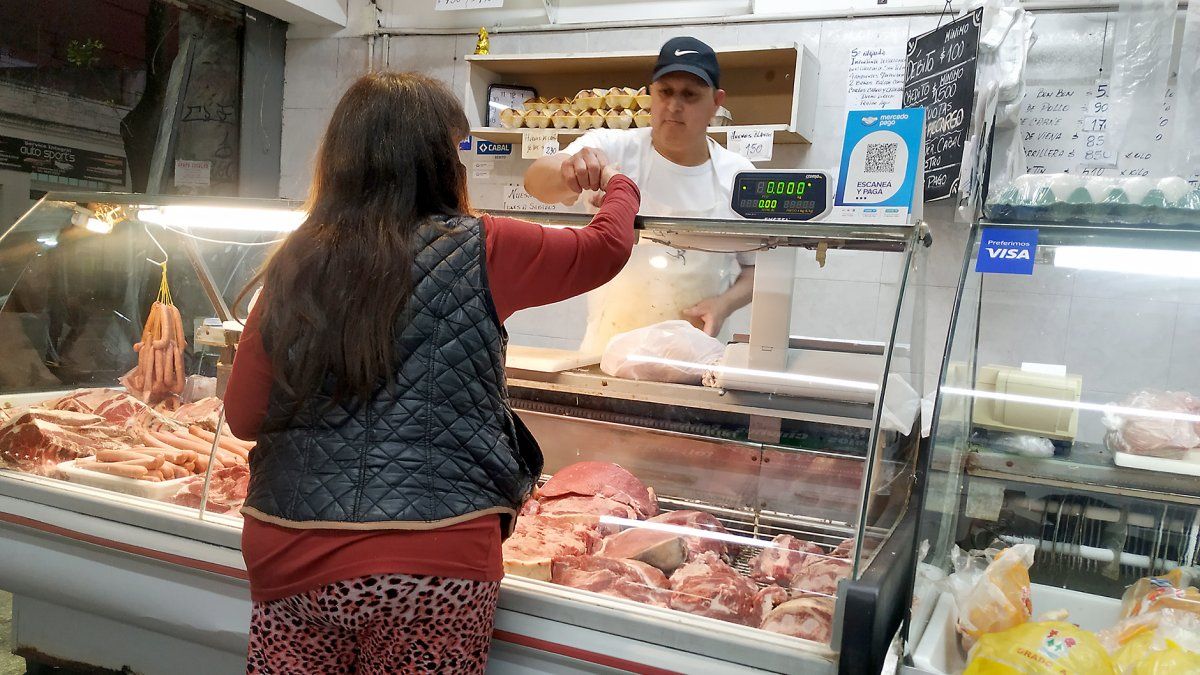It is that, according to the survey carried out by the Free Consumers group, the food basket accelerated in the first fortnight of the month, a figure that has a direct impact on the levels of poverty and indigence. As reported by the entity, the basket of products that it reports climbed 4.9% in the first two weeks of Aprilfor accumulate a rise of 36.1% so far this year. The variation of the first fortnight was the highest for this period of the month so far this year.
It is that, in the first fifteen days of January, the rise had been 2.3% (to increase 7.2% throughout the month); the first half of February the rise was 2% (although it accelerated later and closed the month at 11.8%); while in the first part of March the increase was 3.6% (and totaled 8.2% in the month).
According to the poll, Fruits and vegetables led the rises in the first fifteen days of Aprilwith an increase of 12.2% to accumulate an increase of 73.2% so far this year. Meats, meanwhile, climbed 2.7% so far this month, and have accumulated a rise of 34.7% so far this year. For their part, warehouse products rose 2.6% in April and add up to an increase of 17.2% in 2023.
For its part, the survey carried out by the LCG consultancy also registered an acceleration during the first half of the month. “In the second week of April, the rise in food prices averaged 2.93%, accelerating 0.45 pp compared to the previous week. So far this month, inflation has accumulated 5.5%”, They detailed from the firm. In the first two weeks of last month, for example, the same index registered a variation of 2.5%.
Meanwhile, according to the price survey of the Fundación Freedom and Progressthe food and drinks non-alcoholic had an advance of 5.9% in the first two weeks, “slowing down 0.3p.p. in relation to the second week of March”.
Food inflation and outlook
According to data released by the INDEC, food and beverages rose 9.2% in Marchranking for the third consecutive month above the general level and accumulating a rise of 28.2% in the first quarter. In the interior, the items with the highest growth were Fruits (+14.3%), Meat and derivatives (+11.4%), Milk and other dairy products (+9.6%) and Vegetables (+9.1%) .
After knowing the inflation data for March, CEPA analyzed the factors that may affect food prices going forward: “The moderation of the price increases of bovine meat in the Treasury Market can lead us to expect a lesser impact of this product on the Food item in the month of April. However, the implementation of the ‘dollar agro’ for this product could affect prices upwards. This problem crosses all the products of the regional economies, which, despite the requirement of compliance with the Fair Prices program (required to access the differential dollar), can put pressure on prices”.
For his part, as explained by Damián Di Pace, director of the Focus Market consultancy, “The variation in food prices in March exceeds three interannual digits”. “The drought has affected basic categories such as rice, yerba mate, fruits and vegetables, among others. The ‘agro dollar’ will put pressure on inflation in two wayssince the issuance by the BCRA to acquire the liquidated dollars will be 1% of the GDP and because it will put pressure on the prices of food from the domestic market such as sunflower, corn, wheat, barley, rice, fruit, fish, poultry, honey, sugar, tea and yerba mate among others”.
Along the same lines, from the ACM consultancy they did not rule out “that the recent measures to promote exports can generate problems of volatility and uncertainty in the inflationary outlook”. “The implementation of these measures may affect expectations and this ends up translating into a continuation of the upward trend in price increases for the coming months. In addition, with the objective of accumulating reserves, the current monetary policy begins to have an expansive bias that could affect the exchange rate gap and, ultimately, have a transfer to prices, affecting inflation,” they concluded.
Source: Ambito




